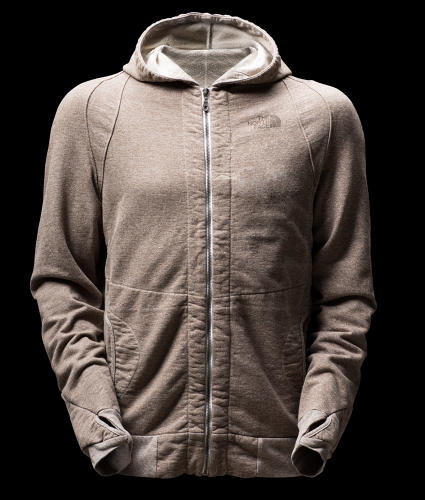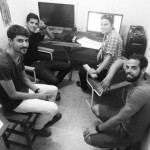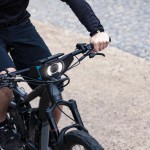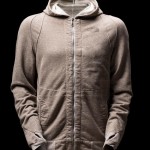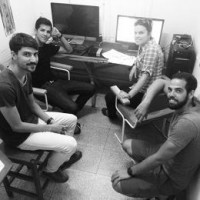This Hyper-local Hoodie Is Made (nearly) best With materials within A one hundred fifty-Mile Circle
From cotton box to stitching manufacturing facility, the outdoor Hoodie is an effective-religion effort to source a section of garb inside a hundred and fifty miles of the emblem’s California headquarters. but even North Face cannot upend a globalized provide chain.
Editor: Morgan Clendaniel
In California, gathering the elements for a in the community sourced meals product is a challenging but possible intention. striking collectively the elements for a locally sourced, mass-market merchandise of garb is just not virtually as simple. This week, The North Face introduced its new outside Hoodie—a section of cotton apparel that was meant to be completely sourced and manufactured within one hundred fifty miles of its Alameda, California, headquarters. although North Face did come close, the company ultimately failed. these days, The North Face’s provide chain takes it in every single place the arena. The cotton in a fleece or hoodie might be grown in the U.S. or India, and despatched for manufacturing to Asia or central the usa. however a bit of over two years in the past, the company started talking to Rebecca Burgess, the founding father of Fibershed, a venture that brings collectively native artisans, growers, spinners, knitters, ginners, and manufacturers to make homegrown manufacturing more straightforward. the speculation for the hyper-local hoodie used to be born. “As a massive attire brand, we typically purchase completed garments. We work with cloth mills to get the precise traits we want however we don’t in most cases have perception into who’s rising that subject material. it is a unique expertise for us, getting all the way down to the true farmer degree,” says Adam Mott, sustainability director at the North Face.
the provision Chain
The North Face was the largest firm that Fibershed had ever worked with, in keeping with Burgess. When the corporate got here calling, she happened to have a bale of brown cotton from Foxfibre, a cotton grower within the Capay Valley, readily available (Foxfibre’s creator, Sally Fox, invented one way for mass-producing naturally coloured cotton). The North Face liked it. in some way, the company settled on two cotton providers for the backyard Hoodie: Foxfibre and the Sustainable Cotton mission, which works with farms in the vital Valley. The cotton is mixed, spun into yarn, and knitted—all of the way out in North Carolina. “It used to be really hard to discover a cotton spinner in California. [North Carolina] is where the guts of the fabric industry is still,” says Mott. After that, the product comes again to the Bay area, the place it is dyed, reduce, and sewn in the East Bay, on the subject of North Face headquarters. California is in the course of a severe drought, which will have impacted the provision of cotton for the hoodie. but the North Face got fortunate; the cotton used in the merchandise was once grown two years in the past, earlier than the drought was as severe as it is today. If the company ever uses local cotton sources in its different merchandise—and it plans to—this may be a subject. “I didn’t even develop cotton this year,” says Fox. “i hope there’s sufficient rainfall that I might be comfy hanging in cotton next 12 months. i feel like we’ve all been in shock about it.”
Designing A Hyperlocal Sweatshirt
The unique provide chain ended up dictating the outdoor Hoodie’s design, as an alternative of the other way around. Foxfibre grows cotton in a handful of colours, including brown. “It used to be seeing this gorgeous brown cotton and determining the way to turn that into a product,” says Mott. however Foxfibre’s heirloom brown cotton—ideal because it already has color embedded in it—wouldn’t work on its own. Fox didn’t have so much cotton on hand when North Face came knocking; the kind of cotton she had on hand spins very best at the pace that industrial spinners use when it can be blended with longer cotton. because of this, it can be blended within the hoodie with dyed white cotton from the Sustainable Cotton venture. The blend provides the hoodie a heather color. The North Face additionally set a goal of making as little waste as possible, which is mirrored in the hoodie’s design. “The spiral pattern on the sleeves, the extra material for a pocket on the within, the articulation in the shoulder—it’s all about seeking to maximize the sample of the product,” explains Mott. may the North Face have succeeded in its 150-mile radius intention if it was positioned in every other a part of the united states of america? presumably within the Southeast, the place cotton is grown and the spinning and knitting business nonetheless exists. but there’s a market for cutting and stitching in California, and Mott is not sure if that part of the process can be imaginable in, say, North Carolina. making a hyperlocal garment is tough any place in the U.S. This wasn’t the case just 25 years ago. within the 1990s, Fox had multi-year contracts with big corporations like Levis and Fieldcrest Cannon, growing heaps of acres of her cotton with help from forty five growers. Then, between 1995 and 2000, the textile industry collapsed within the U.S. after the North American Free exchange settlement handed. “We almost can have made a giant environmental impression,” says Fox. Now, with so few mills left within the U.S., Fox relies on a single mill in North Carolina to spin her cotton. the colored cotton that she grows is particularly troublesome to spin in industrial mills as a result of it will possibly’t be combined with typical cotton. “The mills that are very huge make small margins. they can’t have some specialised little thing,” she says. again before the crumple, though, Fox used a mill in Richmond, California, which falls neatly inside the North Face’s 150-mile-radius goal.
The backyard undertaking
The backyard Hoodie is part of the North Face’s higher backyard venture—a line of polyester/polyester and cotton blend hoodies and T-shirts that are all manufactured within the U.S. the rest of the line will not be rather as native, however the North Face does hope to use its experience with the outside Hoodie to different merchandise. in fact, there must be a marketplace for them. The outside Hoodie is $one hundred twenty five, which isn’t precisely low-cost (the North Face sells many other hoodies in the $50 to $one hundred vary). “probably the most attention-grabbing things about this project will be to see what shoppers take into consideration this kind of stuff, in the event that they’re willing to pay more,” says Mott. The outdoor Hoodie will likely be on hand for a limited time, starting in early December.
(155)

